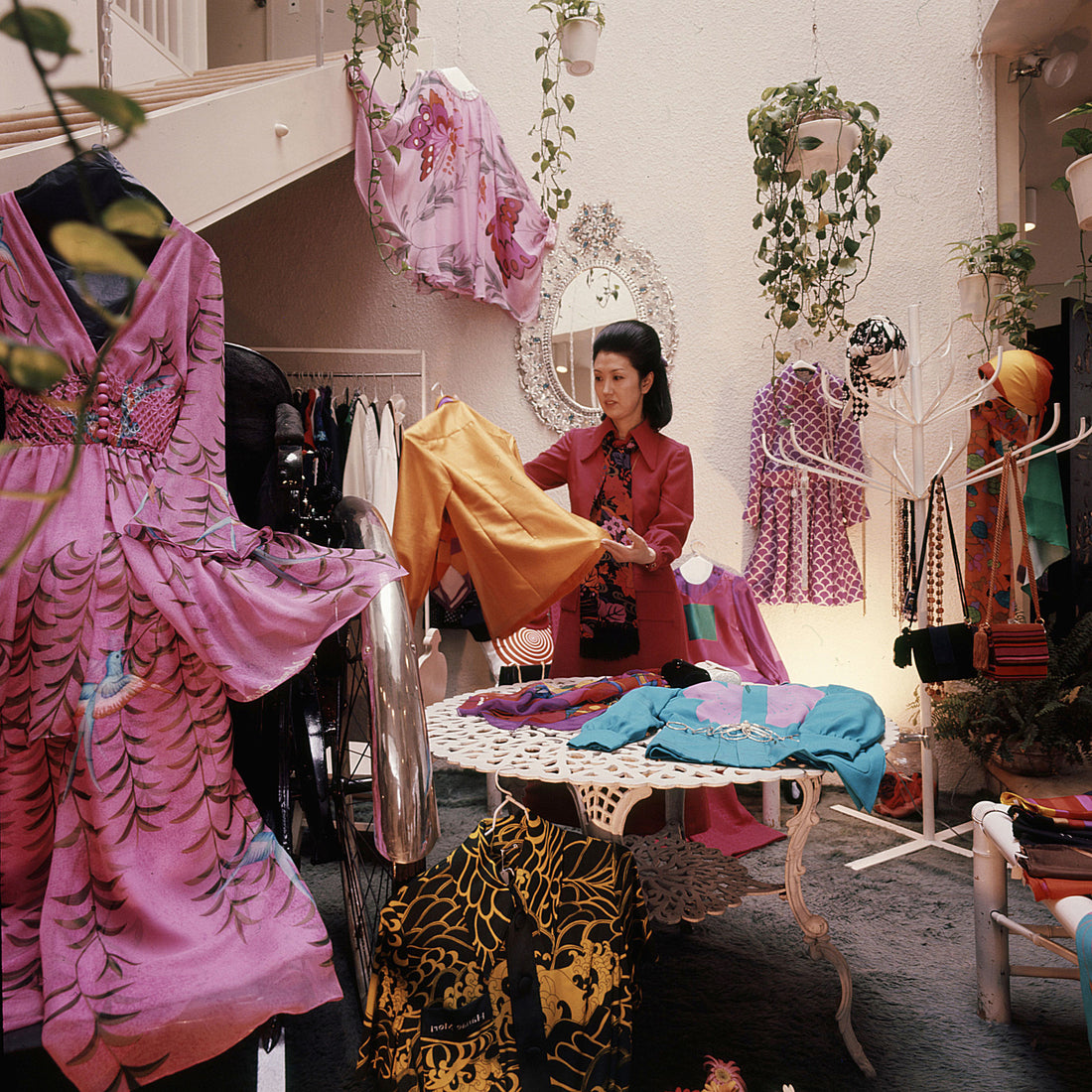After graduating from her literature studies in Tokyo, Hanae Mori attended dress-making school. In 1951 she opened Hiyoshiya, her first boutique, above a noodle shop. It consisted of two assistants and three used sewing machines. Her first success came designing costumes for the Japanese film industry, however in 1965 she became the first Japanese designer to present a collection in New York City, named “East Meets West.”
This title would be the defining theme of her collections to come. After almost abandoning the world of fashion, a fateful fitting with Coco Chanel put Mori “back in the couture mood” and drove her to set up shop in Paris. As a result, in 1977 she became the first Japanese designer to be elected a member of the Chambre Syndicale de la Haute Couture.
Hanae Mori integrated traditional Japanese embroideries, cuts, and fabrics into her work, melding her obsession for French couture with her roots. She often used kimono fabrics and vibrantly colored silks. Even as the kimono became less popular she injected its essence into many of her designs, stating “I cannot force ladies to wear kimono, but I can create the atmosphere of the kimono.” Prints were always a focus of her collections, as were traditional Japanese motifs. She was especially fond of using butterflies in her designs, awarding her the name ‘Madame Butterfly.’
Hanae Mori’s designs garnered international success, something that she was very proud of. In 1978, she was invited to China to help develop the country’s fashion industry.
Like for many other maisons at the turn of the century, the creation of haute couture collections became an economic burden. She sold her brand in 2002, and ceased haute couture activities in 2004.
The way she combined Japanese and Western influences had an undeniable impact on the world of fashion. As young design students, Issey Miyake, Kansai Yamamoto and Kenzo Takada would often visit Hanae Mori’s studio and closely followed her career, later becoming equally important driving forces in exporting Japanese fashion around the world.








